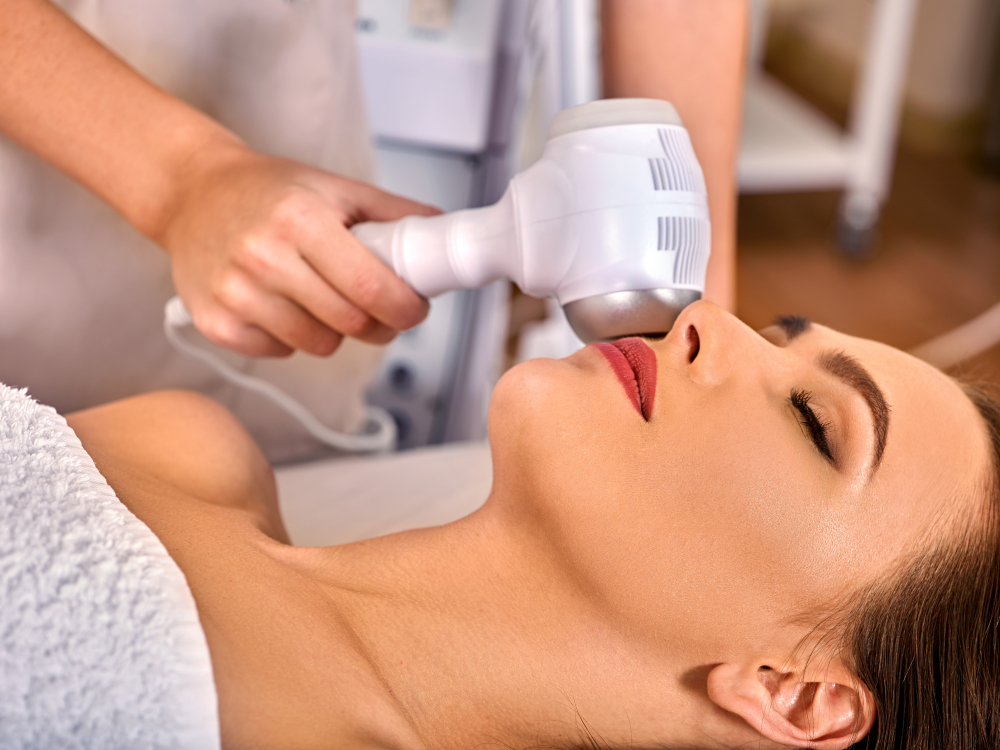- Dysport and Botox are injectable treatments used to improve the appearance of facial wrinkles.
- Both products last for approximately three to four months.
- Dysport is considerably more diluted than Botox.
- They are similarly priced.
Dysport and Botox are injectable products used cosmetically to treat wrinkles and fine lines. The two products have a lot in common, but there are some important differences between them which you should consider before committing to a treatment.
What Are Dysport and Botox?
The main ingredient in Dysport and Botox is botulinum toxin type A, which works by weakening or paralyzing specific facial muscles. This prevents the muscles from contracting and reduces the appearance of wrinkles.
Dysport and Botox treatments are minimally invasive and typically take less than 30 minutes. There is almost no downtime involved with the treatments. Most people are able to resume their normal daily activities immediately.
In the hands of a skilled provider, both products can provide great results, with results lasting approximately three to four months. Both products have a patient satisfaction rate of roughly 95%.
Treatment Areas
What is Botox used to treat?
In 2002 Botox became the first botulinum toxin product to gain U.S. Food and Drug Administration (FDA) approval for cosmetic purposes. It was approved for use in the treatment of glabellar facial lines (frown lines between the eyebrows). Since then, Botox has also been granted FDA approval for treating crow’s feet and horizontal forehead lines.
Botox is employed for a wide range of medical applications, and since 1989 has been used clinically in the treatment of:
- Overactive bladder
- Chronic migraine
- Cervical dystonia
- Hyperhidrosis
- Blepharospasm
- Strabismus
- Upper limb spasticity in adults
What is Dysport used to treat?
In 2009, Dysport received FDA approval for the treatment of glabellar facial lines. It is also commonly used off-label to treat laugh lines and crow’s feet.
Dysport also has a variety of medical applications and can be used to treat:
- Migraines
- Cervical dystonia
- Spasticity in adults
- Lower limb spasticity in pediatric patients
- Hyperhidrosis (excessive sweating)
How Many Units Do You Need?
Despite sharing the same active ingredient, Botox and Dysport have very different concentrations of botulinum toxin type A. Dysport is much more diluted than Botox. You need approximately three units of Dysport to get the same results as one unit of Botox.
Below is a rough guide of how many units are typically required for common treatment areas:
| Treatment area | Botox units required | Dysport units required |
|---|---|---|
| Forehead | 20 | 60 |
| Frown lines | 20 | 60 |
| Crow’s feet (per side) | 10 | 30 |
Dysport spreadability
The extra dilution of Dysport means it tends to spread slightly further than Botox. This can make it easier to treat larger areas as it means fewer injections are required. The added spreadability can slightly increase the risk of the product unintentionally affecting the eyelids and eyebrow if administered by an inexperienced practitioner.
How Much Do Botox and Dysport Cost?
Botox typically costs approximately $12 per unit. This is significantly more expensive than Dysport, which usually costs around $4 per unit.
However, as noted above, you need about three times as much Dysport to get the same result as Botox. This means they effectively end up being quite similar in terms of overall cost.
Here are some estimates of what you can expect to pay for each treatment area:
- Crow’s feet: $120
- Frown lines: $240
- Forehead: $240
It is important to remember that prices can vary significantly depending on your location, the details of your treatment and the fees set by your provider. Men typically require more units than women as they tend to have larger and stronger facial muscles. Some providers don’t charge by the unit, but rather per treatment area.
Botox vs. Dysport: Which Lasts Longer?
Dysport is believed to have a slightly faster onset time than Botox. According to research published in the Aesthetic Surgery Journal, it takes, on average, 12-72 hours to see the effects of Dysport, whereas it can take three to five days to see the results of Botox. For both products, the maximum effect is seen roughly two weeks following treatment.
The effects of Botox and Dysport are temporary. You can expect results to last for approximately three to four months. After this time, you can get more injections if you wish to maintain the results.
However, it’s important to note that results may not last as long after repeated treatments. Research suggests that the body may, over time, develop antibodies to the neurotoxin found in Botox and Dysport, which can make these products less effective.
What Are the Side Effects of Botox and Dysport?
Botox and Dysport have excellent safety profiles and are some of the most popular cosmetic treatments in the U.S. Together with Xeomin, another botulinum toxin type A treatment, they accounted for approximately 46% of all minimally invasive cosmetic procedures in 2017, according to figures from the American Society of Plastic Surgeons.
While the vast majority of patients are able to use Botox and Dysport without adverse side effects, there are a few risks to consider. Some of the most common side effects of Botox and Dysport include:
- Muscle weakness
- Dizziness
- Bruising or redness near injection site
- Headache
- Fever
- Drooping eyelids
- Nausea
- Fatigue
- Trouble swallowing
Toxin migration
There is also a slight risk of toxin migration associated with Botox and Dysport. This is a phenomenon where the product spreads to other parts of the body away from the injection site.
>>To learn more about the different type of botulinum toxin type A treatments, read our article on Botox vs. Dysport vs. Xeomin.
Dysport vs. Botox: FAQs
Will I see faster results with Botox or Dysport?
Dysport has an onset of two or three days, while Botox has an onset of three to five days. With both products, it may take up to two weeks to see maximum effect.
How long does each treatment take?
Both Botox and Dysport treatments typically take less than 30 minutes.
Which treatment is the least painful?
Neither treatment is considered particularly painful. During the procedure, you may feel some pressure or a pinching sensation as the product is administered. Your provider may use a topical anesthetic to reduce discomfort.
Are Botox and Dysport safe to use while pregnant?
The effects of Botox and Dysport on unborn children are still unknown. If you are pregnant or breastfeeding, you should avoid both treatments.
Will I lose the ability to make facial expressions after receiving Botox or Dysport?
No. An experienced provider is able to use Botox or Dysport in a way that reduces wrinkles while allowing you to maintain control of your facial expressions.
Takeaway
Dysport and Botox are ultimately very similar. They’re both great for reducing the appearance of wrinkles, and they last for a similar length of time. They’re also similarly priced similarly and come with the same potential side effects.
Whether one or the other is better for patients comes down to the provider’s professional preferences. A physician who has administered thousands of Dysport injections may be able to achieve better results with Dysport than they would with Botox, and vice versa.
Use the Zwivel search tool to find experienced Botox and Dysport providers in your area.









